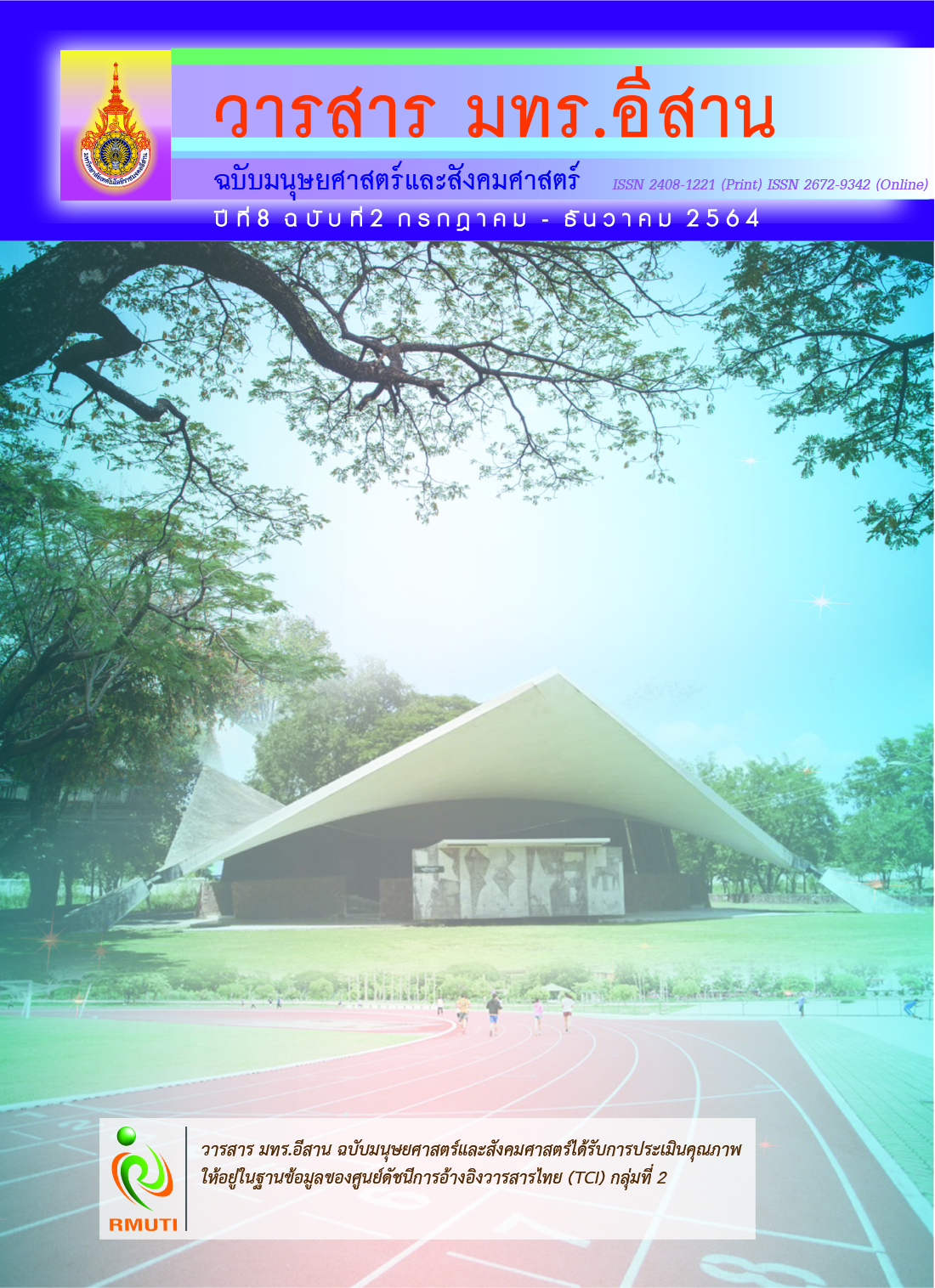Analysis Model of External Environmental Factors Change Affecting Strategy Formulation of the Multinational Corporations
Main Article Content
Abstract
Nowadays, the rapid change of business world affects the administrators to prioritize the analysis procedure of external environmental factors increasingly. Especially, the multinational corporations where are located in the external environment with the complexity and diversity of business which relates to the other country affecting the analysis of external environmental change is the essential procedure of the multinational corporations. The popular instruments for external environmental analysis are PESTEL model for the macro-external environmental factor analysis and Five Forces model for external environmental analysis of industry or competitive state of the industry individually. The utilization of according tools to investigate the external environment assists the administrators define the strategies appropriately and conform to the recently external environment efficiently.
Article Details
บทความที่ได้รับการตีพิมพ์เป็นลิขสิทธิ์ของมหาวิทยาลัยเทคโนโลยีราชมงคลอีสาน
ข้อความที่ปรากฏในบทความแต่ละเรื่องในวารสารวิชาการเล่มนี้เป็นความคิดเห็นส่วนตัวของผู้เขียนแต่ละท่านไม่เกี่ยวข้องกับมหาวิทยาลัยเทคโนโลยีราชมงคลอีสานและคณาจารย์ท่านอื่นๆในมหาวิทยาลัยฯ แต่อย่างใด ความรับผิดชอบองค์ประกอบทั้งหมดของบทความแต่ละเรื่องเป็นของผู้เขียนแต่ละท่าน หากมีความผิดพลาดใดๆ ผู้เขียนแต่ละท่านจะรับผิดชอบบทความของตนเองแต่ผู้เดียว
References
รชยา อินทนนท์. (2563). ธุรกิจระหว่างประเทศ. กรุงเทพฯ: ซีเอ็ดยูเคชั่น
สมชนก ภาสกรจรัส. (2561). หลักการจัดการธุรกิจระหว่างประเทศ. พิมพ์ครั้งที่ 3. กรุงเทพฯ: ซีเอ็ดยูเคชั่น
ศรากุล สุโคตรพรหมมี. (2561). กลยุทธ์ธุรกิจระหว่างประเทศ. พิมพ์ครั้งที่ 2. กรุงเทพฯ: ทริปเพิ้ล เอ็ดดูเคชั่น
Don, B., Michael, G., Michael, M., and Jeanne, Mc N. (2012). International Business: The Challenge of Global Competition. 13rd Edition. Great Britain: McGraw-Hill Education
Francis J. Aguilar. (1967). Scanning the Business Environment. New York: Macmillan.
Harvard Business School. (2008). The Five Forces. Access (16 April 2021). Available (https://www.isc.hbs.edu/strategy/business-strategy/Pages/the-five-forces.aspx)
Ida, S., Azahari, B. R., Munauwar, B. M., and Rushami, Z. B. Y. (2015). Strategic Planning and Firm Performance: A Proposed Framework. International Academic Research Journal of Business and Technology. Vol. 1, No. 2, pp. 201-207
Jane, L. (2011). Understanding Multinational Companies in Public Health Systems, Using a Competitive Advantage Framework. Globalization and Health. Vol. 7, Issue 19, pp. 1-10. DOI: 10.1186/1744-8603-7-19
Manuel, P. F., Dan, L., Fernando, A. R. S., and Sungu, A. (2008). Adaptation to the International Business Environment: A Resource Advantage Perspective. Revista Contemporânea de Contabilidade. Vol. 5, No. 1, pp. 11-29
Mariadoss, B. J. (2015). Core Principles of International Marketing. Access (7 April 2021). Available (https://opentext.wsu.edu/mktg360/chapter/6-2-how-markets-are-segmented/)
McKinsey. (2020). How COVID-19 is Changing Consumer Behavior-Now and Forever. Access (12 April 2021). Available (https://www.mckinsey.com/industries/retail/our-insights/how-covid-19-is-changing-consumer-behavior-now-and-forever)
McKinsey. (2021). The Next Normal Arrives: Trends that will Define 2021- and Beyond. Access (12 April 2021). Available (https://www.mckinsey.com/featured-insights/leadership/the-next-normal-arrives-trends-that-will-define-2021-and-beyond)
Michael, E. P. (1979). How Competitive Forces Shape Strategy. Harvard Business Review.
Muhammad, W. J. K. and Muhammad, K. (2014). Strategic Planning and Reality of External Environment of Organizations in Contemporary Business Environments. Business Management and Strategy. Vol. 5, No. 2, pp. 165-182. DOI: 10.5296/bms.v5i2.6794
Nitank, R. and Trivedi, M. K. (2016). PESTLE Technique - A Tool to Identify External Risks in Construction Projects. International Research Journal of Engineering and Technology (IRJET). Vol. 3, Issue 1, pp. 384-388
Njambi, E., Lewa, P., and Katuse, P. (2015). Porter’s Five Forces Influence on Competitive Advantage in the Kenyan Beverage Industry: A Case of Large Multinationals. Ph. D. Dissertation United States International University
Pair, A. (2017). Five Forces Model คืออะไร? วิเคราะห์ 5 แรงกดดันธุรกิจ. เข้าถึงเมื่อ (12 เมษายน 2564). เข้าถึงได้จาก (https://greedisgoods.com/five-force-คือ/)
Pair, A. (2018). PESTEL คืออะไร? (การวิเคราะห์ปัจจัยภายนอก). เข้าถึงเมื่อ (5 เมษายน 2564). เข้าถึงได้จาก (https://greedisgoods.com/pestel-คือ/)
Qeis, K. (2013). Complexity the Sixth Competitive Force that Shapes Strategy A Cybernetics Approach to “Porter’s Five Forces Model” in Turbulent and Complex Environments. BA, MBA-GM, MBA-PPM Master of International and European Business Law-MBL-HSG Master oec. jur., LLM
Roger, B. M. (2014). The External Environment’s Effect on Management and Strategy: A Complexity Theory Approach. Management Decision. Vol. 45, No. 1, pp. 10-28. DOI: 10.1108/00251740710718935
Rop, K. K. (2013). Strategies Adopted by Multinational Enterprises in Response to Political Changes: A Case of Firms Quoted at Nairobi Securities Exchange in Kenya. Master Degree’s Research Project School of Business University of Nairobi
Sofyan, I. and Ina, P. (2015). Internal and External Environment Analysis on the Performance of Small and Medium Industries (Smes) in Indonesia. International Journal of Scientific & Technology Research. Vol. 4, Issue 4, pp. 188-193
William, H. A. J. (2021). Managing Global Strategy. New York: Routledge
Ylvije, B. K. and Elez, O. (2015). Importance of External and Internal Environment in Creation of Competitive Advantage to SMEs. (Case of SMEs, in the Northern Region of Albania). European Scientific Journal. Vol. 11, No. 13, pp. 120-130
Yogesh, H., Snehal, P., and Mahesh, P. B. (2019). Porter’s Five Forces Model: Gives You a Competitive Advantage. Journal of Advanced Research in Dynamical and Control Systems. Vol. 11, 04-Special Issue, pp. 1436-1448


